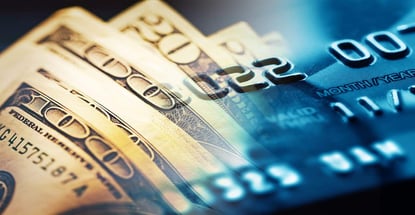
Opinions expressed here are ours alone, and are not provided, endorsed, or approved by any issuer. Our articles follow strict editorial guidelines and are updated regularly.
Credit card debt is rising in America. In fact, a report from LendingTree found that US consumers carry $925 billion in credit card debt as of the third quarter of 2022, which is up $38 billion since the beginning of the year.
Paying off debt is an important financial step most Americans know they need to take, but figuring out how to do it is where most people struggle. But if you have money in savings, you may be wondering whether you should use it to shrink your card balances. The answer to this question isn’t a simple yes or no.
You must carefully consider several factors to determine when to use savings and how much of it to tap into when it comes to paying off credit card balances.
Since this can be a complicated journey, let’s take a look at when it makes sense to use savings to pay off debt so you can make a smart financial decision as you work toward becoming debt free.
How You Answer the Following Questions Determines Your Answer
Here are three questions you must answer before deciding whether to use savings to pay off debt.
How much money do you have in savings?
Socking away money for an emergency is your ticket to staying out of debt for good. It gives you peace of mind that you can care for yourself and any immediate family members (like your children) in the event you go through a difficult financial time.
Cash is crucial when faced with an unexpected bill, medical emergency, or job loss. Without savings, you will likely need to borrow money or lean on a high-interest credit card to get through the financial crisis, digging yourself deeper into debt.
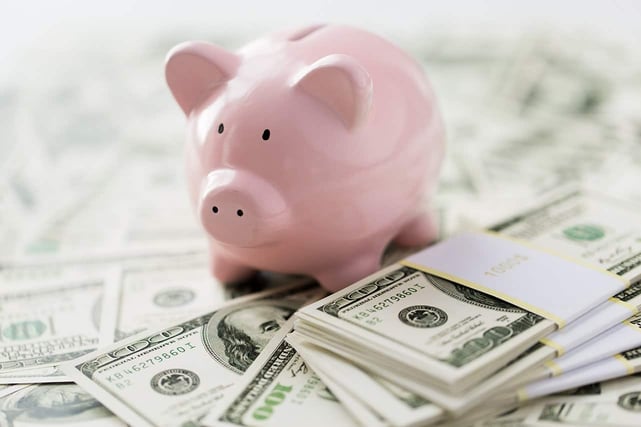
Emergency funds should have enough money to cover at least three months of living expenses and more if you’re self-employed. So run the math to see where you stand. Calculate your monthly living costs and multiply that number by three. If you’re coming up short or hovering right around that suggested figure, it’s best that you keep your savings intact and look for other ways to pay down debt.
For those who have a well-funded savings account and perhaps some extra to spare, using some of that money to pay down credit card debt will not cause any financial harm. In the end, tapping into your savings to pay down some of your credit card balance, even if not all, will reduce the amount you get charged interest on, so you will save more in the long run. Just make sure you replenish any money you withdrew from your savings account with whatever you save each month by not paying interest on your credit card.
The main takeaway here is that if using savings to pay down debt puts you in a vulnerable financial position, don’t do it. But if you can use some savings to pay down even a portion of your debt without worry, go for it. Even if it’s just a little, every bit will help achieve your goal of becoming debt-free.
Are you struggling to pay your bills?
If you’re struggling to pay your credit card bills and other monthly expenses, this is a sign you need to get a handle on your financial situation before tapping into your savings. Poor spending and a mismanaged budget won’t stop haunting you if you don’t address the root cause of the problem.
Spend time scrutinizing your monthly bills and daily spending habits to see where you can cut back and reduce your overall spending. The money saved across these various expenses can be used to pay down your credit card bill without sacrificing your savings.
What interest rate are you paying on your debt?
Most credit cards have high interest rates these days, which can be devastating to your monthly budget if you carry a revolving balance. Depending on how much debt you owe, you could be throwing away hundreds of dollars each month in interest payments alone.
For this reason, there is more motivation to use some of your savings to pay down your credit card balances. Again, this should only be done if it doesn’t deplete your emergency fund or cause any financial vulnerability.
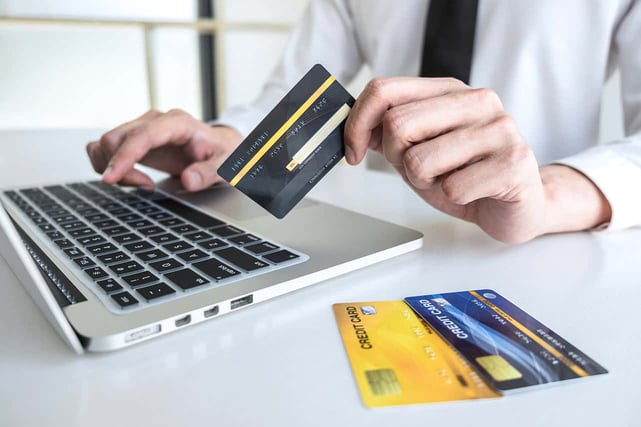
Not everyone has a high interest rate on their credit card, though. If you recently opened a new credit card, for instance, you may have a 0% interest rate for an introductory period. This means you won’t be charged interest for a certain amount of time from the date you opened an account.
Some of the longest zero percent APR introductory offers are valid for 21 months from when you first activated your card.
If you are currently enjoying no interest for a year or more, using your savings to pay down some of the debt shouldn’t be a priority. However, this doesn’t mean you should let your balance continue to linger and grow. Take steps to start paying off the debt well before your introductory period is up so you can be debt-free before interest fees kick in.
3 Ways to Pay Down Debt Without Dipping Into Savings
Paying off debt without using your savings may seem impossible, especially if you’re struggling to make ends meet. But a well-laid-out repayment plan can help you become debt-free as long as you commit to the necessary steps.
1. Reduce Spending
When you can’t use savings to pay off debt, you can try to find money in other ways, beginning with your monthly bills. Reducing your living expenses will free up cash in your budget to put toward debt payments.
Begin by scrutinizing your bills for services you don’t need or use and compare rates with competitors. Take, for example, a recent study that found that 90% of mobile users waste money on unnecessary unlimited data plans.
Switching to a lower-tier data plan with your current provider or moving to an online-only carrier like Mint Mobile will lower your monthly spending significantly. Mint offers plans for as little as $15 a month that include talk, text, and data.
Meanwhile, learning how to plan your meals can reduce food waste to lower your grocery spending. And increasing your insurance deductible will keep monthly premiums to a minimum.
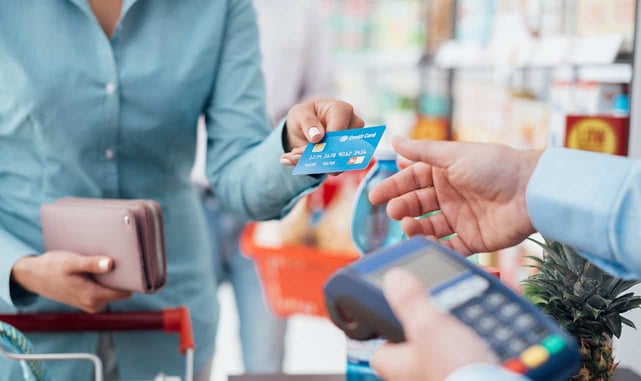
Beyond your monthly bills, think about how you can adjust your spending habits to free up extra cash to help shrink your credit card balance. Even something as simple as paying with cash will help limit impulse purchases so you stop wasting money on things you don’t need.
Finally, adopting savvy spending habits can also play an important role in freeing up money in your budget to put toward debt. Since there are things you have to buy no matter what, stretching your dollars can give your debt payments a boost without sacrificing your purchases.
Always look for used items in good condition before buying anything brand new, compare prices, and check for coupons so you don’t miss out on any savings. Several coupon sites organize coupons by store name so you can quickly find coupons for everything from online grocery orders to clothing purchases.
The key to making this strategy work is to put the money saved directly toward your credit card bill. If you successfully reduce a monthly bill by a set amount, set up automatic credit card payments for that dollar amount.
2. Increase Your Cash Flow
There’s only so much you can do to reduce spending before your budget bottoms out. If you’re already living lean, it’s time to focus your efforts on making more money.
While scoring a raise or landing a better-paying job would quickly solve your financial problem, these aren’t realistic options for most. But this doesn’t mean you’re out of luck because you can boost your cash flow in plenty of other ways.
Side hustles provide flexibility in your schedule and variety in the type of work you can do in your spare time to earn some extra cash. One of the most lucrative side hustles in the US is dog walking, according to Preply.
Other side gig ideas include pet sitting through sites like Rover.com, which claims you can make up to $1,000 a month, virtual tutoring through sites like Varsity Tutors, which pays between $20 to $50 an hour, or online customer service support via The Chat Shop.
Even if you don’t want to work any extra hours, you can find other ways to earn money from home. Look around your house for items you no longer need or use and sell them online.
You can sell gently-used clothing at sites like Poshmark or Tradesy, old electronics such as smartphones at Gazelle or Decluttr, used sporting goods at Swap Me Sports, and furniture or home goods through local listing sites like OfferUp.
In addition to selling, try renting out items you don’t need or while they’re not in use. For instance, you can rent unused baby gear through BabyQuip, rent your parking space through Spot Hero, or even rent your car when it’s not being used through sites like GetAround.com.
The extra money you generate from a side hustle or through selling or renting your goods should go straight toward your credit card bill and can help you get out of debt in no time. Even once your cards are all paid off, keeping up with these new income streams can help boost savings and your overall financial stability.
3. Set and Track Your Repayment Goal
Paying off debt requires a well-thought-out plan, but it can feel overwhelming to get started when credit card bills keep mounting. Begin by breaking down your debt repayment goal into multiple steps, which makes it easier to digest, so you can focus on one step at a time.
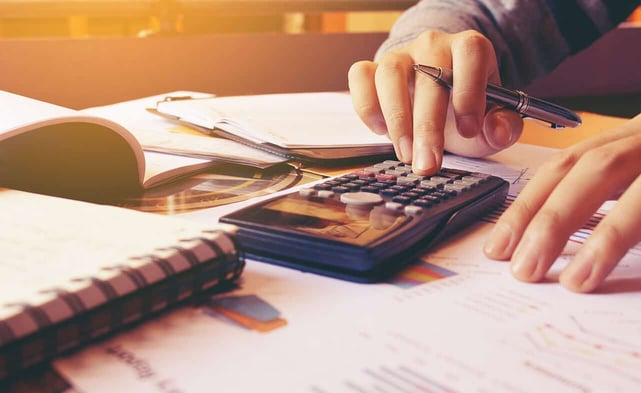
Being realistic about what you can accomplish is key to keeping your goal in perspective. Don’t forget to track your progress, as this plays a vital role in holding yourself accountable and staying on task.
Whether you prefer to write it out on a piece of paper, use an excel chart, or an app that calculates your debt repayment for you, visualizing your progress will help you stay motivated to see your goal through to the end.
Conditions Must Be Met For it to Be a Good Idea
Using your savings to pay off debt makes sense if you have at least three months’ worth of expenses socked away for an emergency — even more important in an unstable economy — and are paying high interest rates on your credit cards.
But if poor spending habits put you in debt in the first place, you must address the issue at hand. Otherwise, you may continue to rack up card debt after you’ve depleted your savings to pay it off.
If earning more money at work isn’t an option right now, consider flexible side gigs and selling or renting items to create an extra income stream to help you achieve your debt payoff goals.




![5 Best Credit Card Loans to Pay Off Your Debt ([updated_month_year]) 5 Best Credit Card Loans to Pay Off Your Debt ([updated_month_year])](https://www.cardrates.com/images/uploads/2017/08/loans2.jpg?width=158&height=120&fit=crop)
![9 Best Ways to Pay Off Credit Card Debt (From Expert Beverly Harzog) ([updated_month_year]) 9 Best Ways to Pay Off Credit Card Debt (From Expert Beverly Harzog) ([updated_month_year])](https://www.cardrates.com/images/uploads/2017/10/Beverly-9Best.jpg?width=158&height=120&fit=crop)
![6 Best Loans to Pay Off Credit Card Debt ([updated_month_year]) 6 Best Loans to Pay Off Credit Card Debt ([updated_month_year])](https://www.cardrates.com/images/uploads/2018/02/loans.png?width=158&height=120&fit=crop)
![How to Pay Off Credit Card Debt ([updated_month_year]) How to Pay Off Credit Card Debt ([updated_month_year])](https://www.cardrates.com/images/uploads/2022/02/How-to-Pay-Off-Credit-Card-Debt.jpg?width=158&height=120&fit=crop)
![11 Best Credit Cards to Pay Off Debt ([updated_month_year]) 11 Best Credit Cards to Pay Off Debt ([updated_month_year])](https://www.cardrates.com/images/uploads/2019/06/Best-Credit-Cards-to-Pay-Off-Debt-Feat.png?width=158&height=120&fit=crop)
![[current_year] Credit Card Debt Statistics (Average U.S. Debt) [current_year] Credit Card Debt Statistics (Average U.S. Debt)](https://www.cardrates.com/images/uploads/2018/04/shutterstock_243114739-edit.jpg?width=158&height=120&fit=crop)